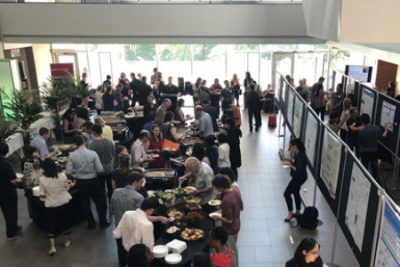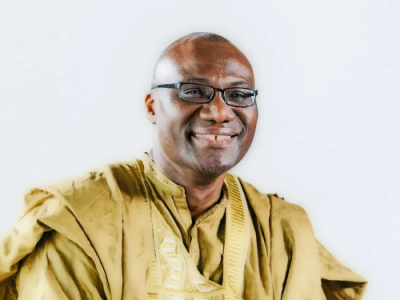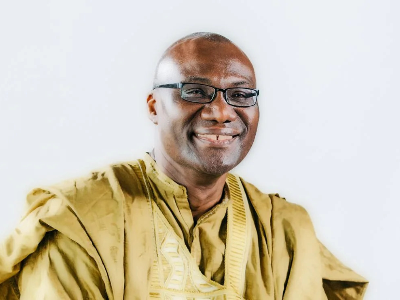By Matt Gergyek
 Humans have the tendency to see themselves as the pinnacle of all living things. The reality is, we represent a miniscule amount of all life on Earth and we often take this for granted. Humans are just one of the estimated 8.7 million living species in the world.
Humans have the tendency to see themselves as the pinnacle of all living things. The reality is, we represent a miniscule amount of all life on Earth and we often take this for granted. Humans are just one of the estimated 8.7 million living species in the world.
For every human, two chickens roam the Earth.
For every chicken, more than 300,000 ants roam the Earth.
And, for every ant, a quadrillion more bacteria are alive (that’s a one with 15 zeroes after it).
Carleton University hosted the second edition of its research showcase called Life Sciences Day 2.0 on May 30, highlighting every living thing. This year, the theme was three-fold, focussing on healthy populations, a healthy planet and healthy communities.
“We wanted to showcase what Carleton does, to develop and understand partnerships with outside organizations – both government and industry – and also to maybe start a little bit of movement on developing . . . life sciences in this region as an economic engine,” said John ApSimon, special adviser to the deans of engineering and science and organizer of the event.
“When someone tells you (that) you need to sit down and focus in one area of study, I’m a living example that [you don’t have to follow that path],” said Interim President Alastair Summerlee, who touted Carleton’s multidisciplinary approach to the subject.
Summerlee was originally focussed on endocrinology before turning to cancer and then on to iron deficiency anemia.
“It’s important in this day and age, when disciplinary barriers are porous, to recognize and take advantage of that,” said ApSimon.
The Life Sciences discipline intersects with virtually every other field of study, from microbiology and particle physics to psychology and social work.
The event kicked off with a keynote address from Rory Francis, CEO of P.E.I. BioAlliance, a partnership between the private sector, research and academic institutions, and government agencies, which strives to help the province’s Life Science sector flourish.
“Anne of Green Gables, mussels, oysters and potatoes are what we’re typically known for, but we’ve come a long way,” Francis said with a laugh, noting the number of Life Science companies has exploded in the province from just 16 in 2004 to 54 last year.
Before the event turned towards exploring the ultimate future goal for Ottawa – a robust and thriving Life Sciences cluster – faculty and community members had a chance to share their current research into the field.
At the healthy populations panel, Carleton Neuroscience Prof. Matthew Holahan showcased his work on Parkinson’s disease in the Chemistry Department.
“We’re melding life science fields to prevent early neurodegeneration,” he said.
There is currently no cure for the disease, which affects roughly one in every 500 Canadians, but Holahan revealed his research team has made great strides.
The team has identified a mutated protein called alpha-synuclein, which is often associated Parkinson’s. They have been able to prevent mutation in petri dish experiments.
“[Current treatment] is like putting a Band-Aid on the disease,” Holahan said. “We want to design a drug that goes for the underlying pathological mechanisms.”
Meanwhile, at the healthy communities panel, chair of the Ontario Ministry of Health’s Patient and Family Advisory Council, Julie Drury, spoke about the importance of involving patients and caregivers in any treatment process.
“Engagement means putting people who have significant depth of lived experience and bringing them into the conversation . . . taking the patient out of the petri dish,” she said.
Drury’s advocacy is close to home. Her late child, Kate, spent years in and out of hospitals due to a rare mitochondrial condition called sideroblastic anemia immune deficiency.
The Drurys turned to Carleton Prof. Martin Holcik, an expert in protein synthesis in disease. Drury recalled how when she first met Holcik and other doctors who would be treating her daughter, she felt misunderstood and unacknowledged.
But when little Kate toured the research lab and met Holcik and other medical professionals first-hand, everything changed.
“It took [Kate] out of the science and created a real person . . . to fix, to help and to support,” she said.
At the healthy planets panel, Jesse Vermaire, professor of Environmental Science, Geography and Environmental Studies, spoke about the importance of protecting the nation’s abundance of fresh water.
“Canada has 60 per cent of all the world’s freshwater lakes . . . we have a responsibility to manage it properly.”
For many, the highlight of the event was the student poster exhibits.
Stéphane Magnan, a Master of Mechanical Engineering student and Ashley Mazurkiewicz, a Master of Biomedical Engineering student, presented their research into the impact of concussions on the human brain.
The duo said they want to help researchers understand how the brain is impacted by concussions from an engineering perspective, rather than just a medical or neuroscience one.
For their experiment, Magnan and Mazurkiewicz used a high-speed X-ray to capture the movement of model brains inside skulls after striking a surface, millisecond-by-millisecond.
Research from the NCAA suggests that nearly 20 per cent of male post-secondary athletes and almost 15 per cent of female post-secondary athletes will experience a concussion.
“A key factor is they just don’t want to change the rules,” Magnan said. “There’s that nervousness of losing fans who’ve watched the game all their life.”
On the other side of the Life Sciences spectrum, Alexa D’Addario, a Master of Science in Geography student, presented her work examining the presence of microplastic in local water.
D’Addario will trek into the Ottawa River and collect samples to analyze whether aquatic species are eating tiny pieces of plastic, which humans eventually digest.
“Plastic pollution is a big problem,” she said. “Plastic breaks down to a small size, but never disappears completely.”
Natasha Osborne, who will graduate this June from Carleton’s Biology program, used mice to study the impact of stress on pregnancy and unborn offspring.
Osborne’s research suggests that prenatal stress could be linked to the development of mental illnesses, such as post-traumatic stress disorder (PTSD), later in a child’s life.
“Trauma in pregnancy is serious, we need to have interventions ready,” she said.
The event continued with a panel highlighting some of Ottawa’s brightest local Life Science start-ups. Companies included Turnstone, which develops viral immunotherapies for cancer treatment, along with Spiderwort, which develops biomaterial to replace damaged human cells, tissues or even organs.
In the end, ApSimon said one of the main goals of the event was to help students network with the world outside Carleton to build relationships with prospective employers or colleagues.
“People discover each other by accident sometimes, and I’d like to help the accidents happen,” he said.
The event came to a close with a panel exploring the next 20 years of the Life Science sector, moderated by Gail Garland, CEO of the Ontario Bioscience Innovation Organization. The panel featured discussions with Sal Causi of IBM, Jim King of the Children’s Hospital of Eastern Ontario (CHEO) and Stephen Downes with the National Research Council (NRC).
Thursday, May 31, 2018 in Campus News
Share: Twitter, Facebook



